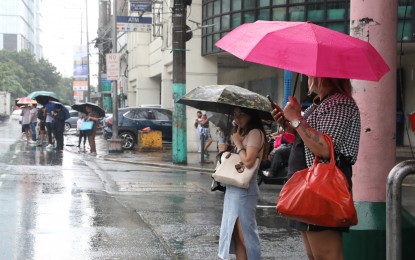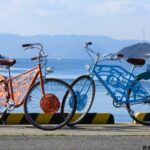MANILA – A low-pressure area (LPA) east of Mindanao will continue to bring cloudy skies with scattered rains and thunderstorms over parts of the Visayas and Mindanao.
As of 3 a.m., the LPA was spotted 445 kilometers east of Hinatuan, Surigao del Sur.
The LPA is likely to develop into a cyclone as it moves closer towards Visayas and Mindanao.
Once it turns into a tropical cyclone, it will be called “Jacinto”, the tenth one to enter the Philippines.
The "habagat" or the southwest monsoon, meanwhile, is affecting the western section of Southern Luzon.
Eastern Visayas, Central Visayas, Caraga, Northern Mindanao, and the Davao Region will experience cloudy skies with scattered rains and thunderstorms due to the LPA, with possible flash floods or landslides during moderate to heavy rains.
Palawan will have partly cloudy to cloudy skies with isolated rain showers or thunderstorms due to the monsoon, while Metro Manila and the rest of the country will see partly cloudy to cloudy skies with localized thunderstorms.
Possible flash floods or landslides during severe thunderstorms.
Winds across the country will be light to moderate with slight to moderate seas, ranging from 0.6 to 1.8 meters.
Outside the Philippine Area of Responsibility, Typhoon Kajiki was spotted 900 km west of Northern Luzon, packing maximum sustained winds of 120 kilometers per hour (kph) and gusts of up to 150 kph. It is moving westward at 25 kph.
Kajiki has no direct effect on the country.
Mindanao
Mindanao is the second-largest island in the Philippines and is known for its rich cultural diversity, being home to a significant population of Muslim Filipinos. Its history is marked by pre-colonial sultanates, Spanish resistance, and a long-standing quest for autonomy. The island is also renowned for its stunning natural landscapes, including Mount Apo, the country’s highest peak.
Visayas
The Visayas is a major island group in the central Philippines, historically significant as the first area colonized by Spain following Ferdinand Magellan’s arrival in 1521. The region is renowned for its vibrant festivals, such as Cebu’s Sinulog, and its pristine white-sand beaches and diverse marine life.
Hinatuan
The Hinatuan Enchanted River is a deep spring river on the island of Mindanao in the Philippines, renowned for its clear, deep blue water. Local folklore attributes its creation to supernatural beings, while its true source remains a partial mystery as its depths have not been fully explored. It is a significant cultural landmark and a popular tourist destination.
Surigao del Sur
Surigao del Sur is a province in the southern Philippines, located on the northeastern coast of Mindanao. It is historically significant as the site of the ancient Rajahnate of Butuan and is renowned for its pristine natural attractions, including the Enchanted River and numerous white-sand beaches.
Palawan
Palawan is a long, narrow island province in the Philippines, renowned for its stunning natural landscapes, including the Puerto Princesa Subterranean River National Park. Historically, its earliest inhabitants were the Tagbanwa and Palaw’an tribes, and artifacts suggest it was part of ancient trade routes with China. The island was also a significant battleground during World War II before becoming a modern hub for ecotourism.
Metro Manila
Metro Manila is the bustling capital region of the Philippines, a dense metropolitan area composed of 16 cities. It was formally established in 1975 to administer the growing urban sprawl, though its core city, Manila, has a much longer history as a major trading port dating back to the Spanish colonial era in the 16th century. Today, it serves as the country’s political, economic, and cultural center.
Philippines
The Philippines is a Southeast Asian archipelago nation with a rich history shaped by indigenous cultures, over 300 years of Spanish colonial rule, and a period of American administration. Its culture is a vibrant fusion of these Malay, Hispanic, and Asian influences, evident in its historic Catholic churches, traditional festivals, and unique cuisine. The country is also renowned for its stunning natural beauty, including pristine beaches, rice terraces, and diverse marine ecosystems.
Luzon
Luzon is the largest and most populous island in the Philippines, home to the capital city of Manila. Historically, it was a major center of Spanish colonial rule for over three centuries, which left a lasting cultural and architectural legacy. The island is also significant for its role in World War II and is the political and economic heart of the modern Philippine nation.






